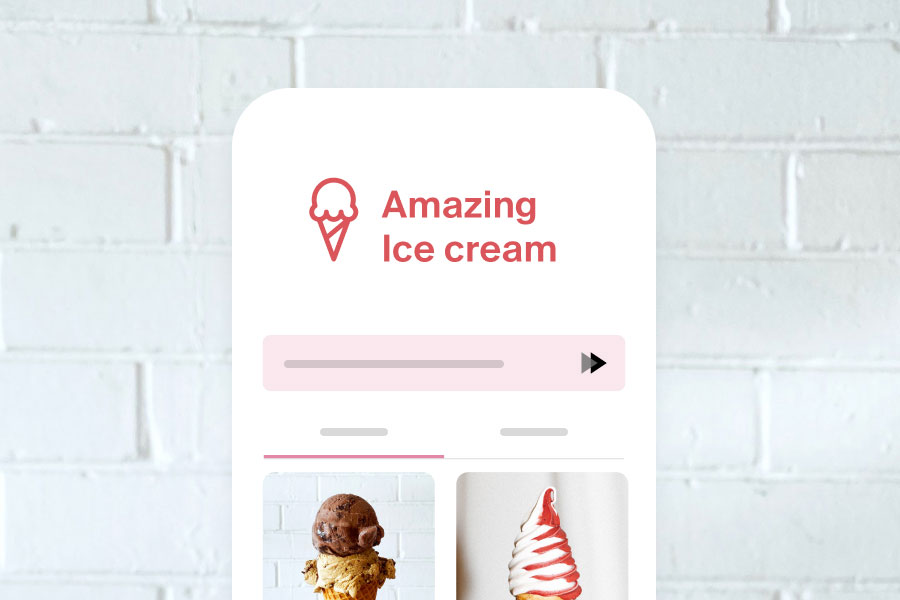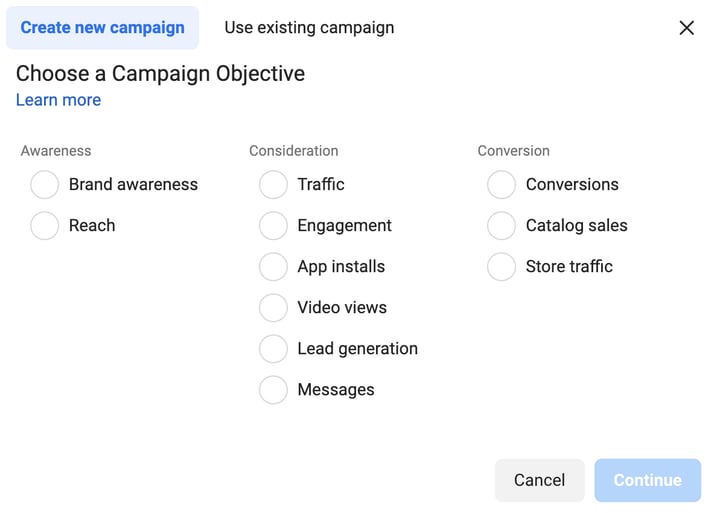The Beginner’s Guide to Advertising on Instagram
By Sarah Al-Waleed

Instagram offers numerous opportunities for businesses of all sizes to reach their target audiences. But with the rapid increase of business profiles on Instagram, organic reach is proving to be an increasingly difficult feat to accomplish. That's why business owners turned to Instagram ads to give their brands that extra boost.
Today, millions of businesses use Instagram ads to target different demographics of potential customers, expand their brand awareness, and increase sales.
What are Instagram ads?
Instagram ads are video or photo posts that businesses can pay to publish to reach a larger and more targeted audience. Instagram ads appear in users' feeds, Stories, Explore tabs, and more. Unlike regular posts, they contain a "sponsored" label to indicate that they are ads. They also often have features, such as links and call-to-action (CTA) buttons (e.g., "order food" or "learn more").
Since Instagram and Facebook are a part of Meta Technologies, businesses can publish Instagram ads using Facebook Ads Manager. You can also create ads using Instagram by choosing one of your best-performing posts to "promote" or "boost."
Why should you advertise on Instagram?
A. Growth potential
Instagram is one of the fastest-growing social media platforms in the world. Statistics suggest that the number of users who are consistently engaging and consuming personalized content on their feeds is ever-increasing.
This growth means that Instagram ads will offer plenty of opportunities for businesses to get in front of their target audience, expand their brand recognition, and ramp up their sales.
B. Speedy ad publication
Are you ready for instant stardom? On Instagram, you can submit your ad and get approval to go live within 24 hours. This swift turnaround time enables you to start promoting your restaurant, drive business, and achieve a higher return on investment (ROI).
C. Segmented targeting opportunities
Instagram offers businesses incredible segmentation and targeting capabilities when it comes to their audiences. You can specify your target audience's locations, demographics, behaviors, interests, and other criteria.
If you haven't quite pinpointed who your target audience is yet, Instagram is a great place to experiment. You can start slowly and use the data you collect from each ad you publish to improve the next one.
D. Flexible pricing
There is no set price for advertising on Instagram. You may choose your bidding model, which can either be cost-per-click (CPC) or cost-per-impression (CPM). Instagram charges around $0.70-$1.00 against a cost-per-link click (CPC) campaign, while a cost-per-mile campaign (CPM) ranges between $2.50-$3.50 (the term mile here refers to 1 thousand impressions).
You will also have to be aware of a few factors that typically determine ad campaign prices, which include the following:
A. Bid Amount: How much will you spend on an Instagram ad campaign?
B. Relevance Score: How relevant is your ad to Instagram users who will see your ad?
C. Estimated Action Rates: How likely are users to act on your ad?
D. Competition: Other brands that are aiming to reach the same user demographics.
E. Ad objectives
F. Target audience & their size
E. Trackable insights into ad performance
Instagram enables you to track the performance of your ads according to your pre-set objectives (which we'll get to in a minute). So, whether you want more website traffic, sales, or leads, Instagram generates insights and reports allowing you to measure the impact and success of your ad goals.
Now you know the importance of Instagram ads and all the different benefits you stand to gain by launching your first Instagram ad. Next, it's time to learn to set the right objectives to turn your Instagram ad campaign into a success.
What are your ad objectives?
Before creating an Instagram ad, you must first decide on your campaign objectives (i.e., the "action" you want people to take when they see your ads). Because based on these objectives, the Instagram algorithm will show your ads to the people in your target audience who are most likely to take that action.
Meta Ad Manager divides your Ad objectives into three categories: awareness, consideration, and conversion. Here's a quick overview of the different Instagram objectives.
1- Awareness Objectives
The two campaign objectives in the awareness category—Brand Awareness and Reach—are designed to expose your ad to the largest number of people in your target audience.
A. Brand Awareness - As the name suggests, it aims to increase your brand awareness among Instagram users who might not be familiar with it.
B. Reach - With this Instagram ad objective, your ad will reach as many people as possible in your target audience.
2- Consideration Objectives
The six consideration campaign objectives—Traffic, Engagement, Video Views, Lead Generation, Messages, and App Installs—aim for a specific action such as clicks, comments, or views.
A. Traffic - It enables you to drive more traffic to your website or any other URL you choose.
B. Engagement - It boosts the social actions of your audience, such as comments, likes, shares, and event responses to your ad.
C. App Installs - If you have an app and your primary goal is to increase downloads, your ads will then be shown to the people in your audience who are most likely to install the app.
D. Video Views - It shows your video ad to people in your target audience who are most likely to watch it.
E. Lead Generation - It allows you to add a contact form to your Instagram ad. So, when prospective customers click on your ad, they're prompted to provide details such as their name, email address, and other contact details.
F. Messages - It shows your ads to the people most likely to send you direct messages (DMs) to chat with you or ask questions before making an order.
3- Conversion Objective
The three conversion objectives—Conversions, Catalog Sales, and Store Traffic—encourage people interested in your business to buy or use your product.
A. Conversions - It allows your ad to reach the people who will take a specific action on your website, such as ordering food.
B. Catalog Sales - It allows you to create a catalog to showcase your products to your target audience. With this objective, you can also retarget people who have already shown interest in a specific item on your site.
C. Store Traffic - It boosts foot traffic to your physical store by showing people within a specific radius the ads containing the closest location to your store. Just make sure your store locations are added on Facebook.
What are the types of Instagram ads?
Instagram supports several content formats — feed posts, reels, stories, carousels, and more. And you can run your Instagram ads on almost all of these content formats, allowing you to reach your target audience wherever they are.
You can also pair all these ad formats with great captions, relevant hashtags, and dynamic CTA buttons.
Here are a few different Instagram ad formats you can use to create engaging campaigns and drum up new business.
-
1- Photo Ads
Photo ads are the primary ad type on Instagram because they provide a clean and simple format. They are best suited for campaigns with compelling visual content that can be conveyed in a single image. Photo ads are the easiest to set up, and they tend to perform well. The image can be square or landscape.
Supported objectives: Brand Awareness, Conversions, Engagement, Message, Lead Generation, Traffic, and Store Traffic.
-
2- Video Ads
Instagram video posts receive twice the engagement of other post types, which definitely carries over to Instagram video ads. There are many reasons to invest in video ads. The main one is that Instagram video ads allow you to share complex content that can't be conveyed in a single image.
There are several Instagram video ad types, including:
A. In-feed video ads – 1 to 60 minutes, appearing in-between user feeds.
B. Stories video ads – 1 to 60 seconds long, appearing between user stories.
C. Explore video ads – 1 to 60 minutes, easily found in the Explore section.
D. Reels video ads – 0 to 15 minutes, appearing in feeds and reel tabs.
Supported objectives: Video Views, Traffic, Conversions, Brand Awareness, Engagement, Lead Generation, Message, Reach, and Store Traffic.
-
3- Story ads
Instagram story ads appear in the Instagram Stories section of users' feeds. They're similar to organic stories but don't disappear after 24 hours. Instead, you can run them for as long as you want by adjusting the campaign duration and frequency of ads. Story ads can either be photos, infographics, or videos. If done as a video, the story can be up to 60 seconds long, as seen earlier.
Instagram Story ads are unique because they can be smoothly positioned into a user's story viewing experience. They also have an option that allows you to include swipe-up links to reroute your target audience to any URL you choose.
Supported objectives: Conversions, Store traffic, Brand Awareness, Lead Generation, Message, Reach, Views, and Traffic.
-
4- Carousel Ads
Carousel ads feature a series of up to 10 images or videos that users can swipe through in a single ad. They can appear both in-feed and within Instagram Stories, with a CTA button or swipe-up link that leads users directly to your website.
Restaurant owners can use carousel ads to showcase a collection of products or tell a multi-part story. Therefore, the content of those carousel ads needs to be cohesive and engaging.
For example, a new restaurant could showcase how multiple ingredients are combined to make a delicious dish. Once the user has swiped through the images, you can use a CTA button to direct them to your website to make an order. Partnering with a specialised restaurant advertising agency ensures that your carousel ads are optimized to attract and engage your target audience, ultimately driving more traffic and orders to your business.
Supported objectives: Conversions, Traffic, Lead Generation, Brand Awareness, Reach, Catalog Sales, Store Traffic, and Messages.
-
5- Explore Ads
According to Instagram, the Explore tab has 200M+ daily users, and 83% of them discover new products or services using that space on Instagram. Users in the Explore section are looking for something new and exciting outside their regular newsfeed to pique their interest—your ad can capitalize on that!
Explore ads appear in the Explore section of the app and can be used to target specific demographics and interests. And they can be in a photo or video format. Explore ads address a high-value audience for any brand looking to boost their ROIs and increase sales.
Supported objectives: Brand Awareness, Reach, Engagement, Lead Generation, Traffic, and Store Traffic.
-
6- Reel Ads
Reels are short videos to which you can add audio tracks and special effects. You can create reels from existing videos or shoot new ones on the spot. Reels offer space for creativity and empower you to show off your brand.
Like Instagram Story ads, Instagram Reels ads show up between regular, non-sponsored Reels that users view.
Supported objectives: Brand awareness, Reach, Traffic, Video views, and Conversions.
Putting it all together...
Instagram advertising can be a lot. There are many types of Instagram ads, and deciding which is best for your brand objectives requires some effort. When you experiment with different types of Instagram ads, you will be able to identify which ones yield the best results with your target audience.
Continuous improvement is the key to getting the most out of your Instagram ad campaigns. And as you optimize and refine your ads, you'll be more likely to grow an engaged community and reach new customers. Before starting your ad campaigns, you will need to build a solid Instagram account, to learn more about doing so read our guide that will help you master Instagram Marketing for your restaurant.
Talk to Zyda experts now to learn more about how Zyda will help you optimize your Instagram ads with our Meta integrations.





